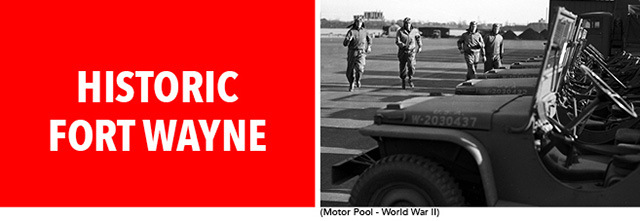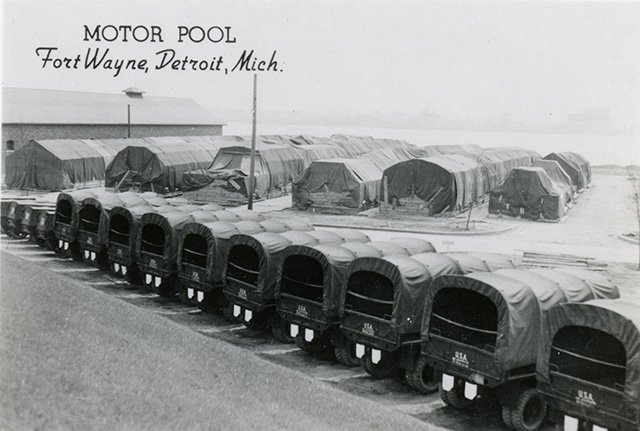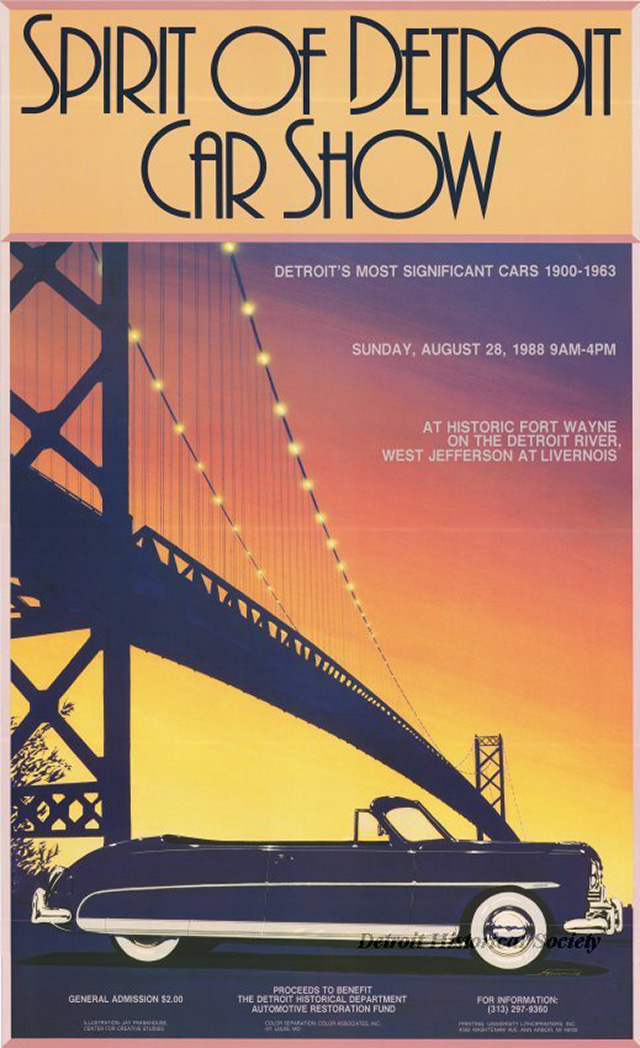
Fort Wayne was built in 1840 as a defensive border when tensions were high between the United States and British Canada. Overlooking the Detroit River, the Fort’s original design called for the installation of a cannon to fire on enemy ships coming up the river or assembling on the Canadian shore. Diplomacy reduced tensions, however, and no cannon was ever mounted or shots fired. Instead, the Fort functioned as an important military induction center for more than a century.
Indeed, the site’s history goes back much further in time. The grounds of Fort Wayne include a Native American burial mound constructed nearly one thousand years ago. A Potawatomi Indian village was located there from 1710 –1771.
The star-shaped Fort, completed in 1849 and remodeled in 1861, is an example of pre-Civil War military construction. The federal style building features three-and-a-half story limestone troop barracks laid out as five independent but adjacent sections.
The Fort served as a training center for Union soldiers during the Civil War. During the Spanish-American War, troops from Fort Wayne were deployed to Cuba and the Philippines. Five hundred African - American soldiers, serving in what was then a segregated army, were stationed at the Fort during World War I. The Fort’s doors were opened to homeless families and to Civilian Conservation Corps workers during the Great Depression. Fort Wayne even served as a temporary detention center for accused communists awaiting trial in the Cold War era.
 (World War II)
(World War II)
The U.S. military used Fort Wayne to store and ship cars, trucks, and spare parts during World War I. The site’s importance increased during World War II, when the Fort became the largest motor supply depot in the world. Over 2,000 civilians—mostly women—were employed to keep the supplies moving.
In 1948, the military turned the Fort over to the City of Detroit. Although it was no longer owned by the military, it was still used as an entry station for draftees during the Korean and Vietnam wars.
Since early 2006, the Fort has been operated by the Detroit Recreation Department, assisted by the Historic Fort Wayne Coalition, the Friends of Fort Wayne, and the Detroit Historical Society. In addition to the ancient burial mound, the Tuskegee Airmen Museum is housed on the site. Each spring and fall, there are reenactments, flea markets, concerts, youth soccer league matches, and Boy Scout events.
[Insert: DHS 24 (Ft Wayne Auto Show Poster).jpg] – Insert this caption: 
The fort sits on 96 acres, with 83 acres belonging to the City and the remaining 13 operated by the Army Corps of Engineers as a boatyard. Designated a Michigan State Historic Site in 1958, the Fort was listed on the National Register of Historic Places in 1971.
Click to view:
10 Key Events from Fort Wayne’s Past
The Site's Significance to Native Americans
Click the link below for more information from the City of Detroit:
City of Detroit Historic Designation Advisory Board “Military Streets Study Report” This report explores the origins of several of the neighborhood’s subdivisions that reflected the fort’s presence and highlights some of its architectural history. (Scroll down the list on this page to download a copy of the study.)
TEXT & RESEARCH – DIANNE FEELEY
PHOTO CREDITS
Detroit Historical Society
Fort Wayne Aerial / Fort Wayne Auto Show Poster / Fort Wayne Motor Pool Postcard / Fort Wayne WAGS



